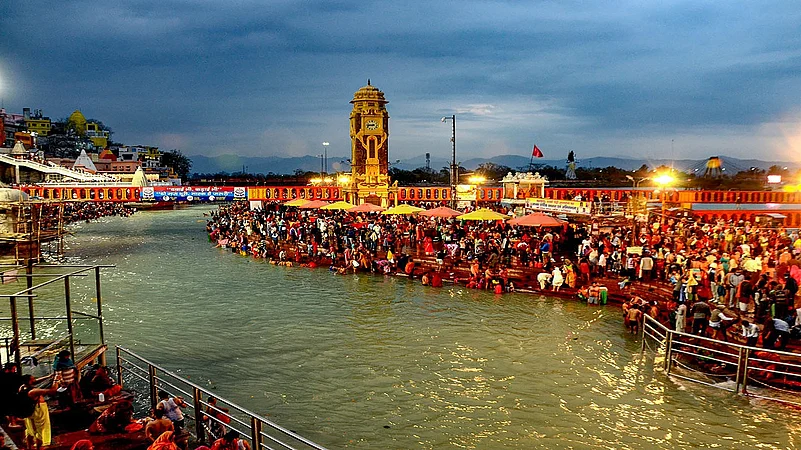There’s something magical about the monsoon. As the skies darken and the first drops of rain touch the earth, it’s as if nature itself exhales, washing away the heat and dust of the months gone by. This shift in season means something profound to millions of people when they welcome the month of Shravan.
The Hindu calendar organizes this particular month into something greater than calendar durations. It’s a feeling. A brief moment in time gives people sufficient harmony to interact with faith and tradition and discover their inner silence that commonly disappears amid daily chaos.
The Kanwar Yatra: A Walk of Heart and Hope
If you’ve ever driven on the highways of North India during Shravan, you’ve probably seen them,kanwariyas, dressed in saffron, carrying decorated bamboo poles over their shoulders. They walk barefoot for miles, sometimes for days, collecting water from holy rivers like the Ganga to offer at Shiva temples.
What’s powerful isn’t just the distance they travel, it’s who they are. They’re not saints or sadhus. They’re regular people. A teenager on summer break. A shopkeeper from a busy bazaar. A father who made a vow in silence. They walk with blisters on their feet but purpose in their hearts.
And if you ask them why, they’ll tell you stories. Some are simple," I made a promise." Others will give you goosebumps, stories of healed family members, of new beginnings, of burdens lifted. The journey is tough, painful even, but somehow, it transforms them. With each step, they seem to leave something behind: fear, doubt, pain. And what they carry forward is faith.
Legends Close to Home
Shravan isn’t only lived on highways or temple grounds. It also lives in the quiet corners of homes, in the whispered stories passed down from grandmothers, in the prayers of mothers, and in the everyday rituals we grew up watching without fully understanding, until one day, we did.
In a village in Maharashtra, people believe that Lord Shiva once walked through their fields, disguised as a traveler. In Tamil Nadu, this month overlaps with Aadi, a time when the divine feminine, Amman, is celebrated with songs that echo through temple halls, led by women whose voices carry both devotion and memory.
And then there are the deeply personal legends. Maybe your grandmother fasted every Monday of Shravan and always said her prayers never went unheard. Maybe your uncle never missed a single Shravan Somvar, and now his kids light the same diya he once did. These aren’t stories from ancient texts; they’re stories from our lives. And they carry just as much power.
Finding the Sacred in the Simple
Not everyone walks to Haridwar or fasts through the month. And that’s okay. Shravan doesn’t ask for perfection; it invites presence. Lighting a lamp with intention, sitting in silence for a few minutes, or even just starting the day with a prayer or a deep breath, these small acts can be deeply spiritual, if done with heart.
In a world where everything moves fast and we’re always scrolling, Shravan gives us an excuse to pause. To step outside the rush. To remember something older, quieter, and more meaningful.
Why These Stories Still Matter
It might be easy to think that all this, pilgrimages, fasts, old tales, is from another time. But perhaps it’s now, more than ever, that we need them.
Because in a world full of noise, faith offers stillness.
Because when life feels uncertain, traditions give us something steady to hold on to.
And because, at the end of the day, what Shravan really offers is a way back to ourselves, to our roots, and to a sense of belonging that’s hard to describe but deeply felt.
So as the rain begins to fall, and the scent of earth rises to meet the sky, maybe take a moment. Light a diya. Say a prayer. Listen to a story from someone older. Or just sit with your thoughts. Shravan isn’t about doing more, it’s about feeling more. And sometimes, the most sacred journeys are the quietest ones of all.
Follow 카지노 Experiences:
| | |















